Rain gardens: 10 stunning ideas and designs that soak up rain run-off
These rain gardens are sure to inspire you – they're great for the environment, for wildlife, and help to prevent flooding too
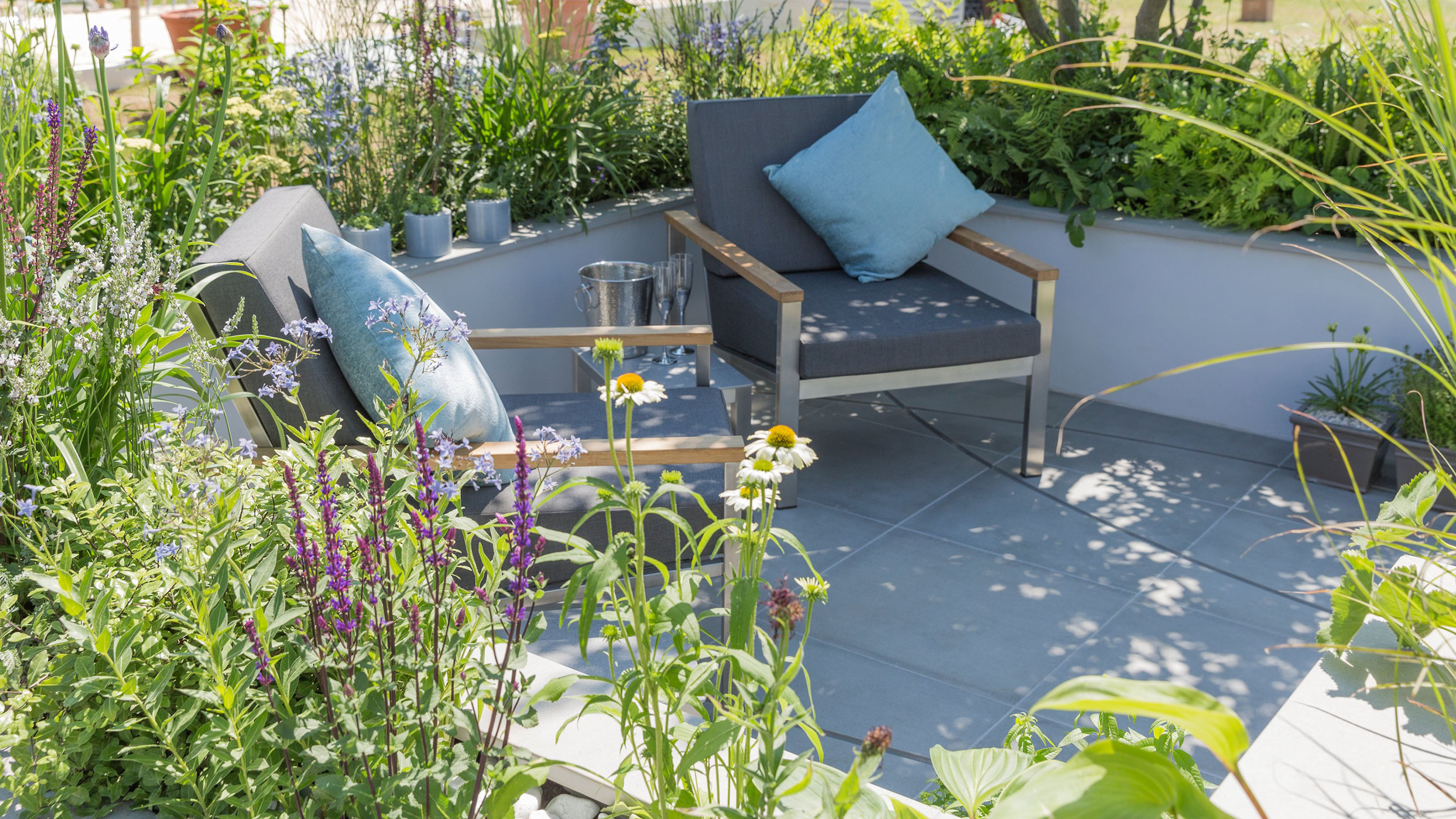

Have you ever thought about rain gardens when considering the design of your plot? They might sound a little unfamiliar, but these features are beneficial for more reasons than one.
For starters, rain gardens help to decrease the risk of flash floods. Their main purpose is to collect and make the most of rainwater run-off – whether it be from patios or roofs. Put simply, they help a garden deal with heavy storms, so if you live in a zone where weather can be temperamental, they're a good option to consider.
The rain garden itself consists of a small, shallow-dug area in the ground (although drainpipes leading to planters can also be used) filled with a mix of compost and native soil or sand. The soil mix soaks up the excess water, whilst plants, picked for their tolerance to the conditions, will absorb the toxins which have been picked up along the way. This means that less polluted water ends up entering storm drains and getting into streams, rivers, and lakes. So, they're a great addition to sustainable gardens, especially if you're in urban surroundings.
Rain gardens: 10 ideas and designs for your backyard
Sure, rain gardens are good for the environment, but there are lots of aesthetic and sensory benefits of utilizing rainwater in a garden too. We've rounded up some of our favorite tips and ideas below to help you get inspired for your own plot.
1. Bring in a living roof
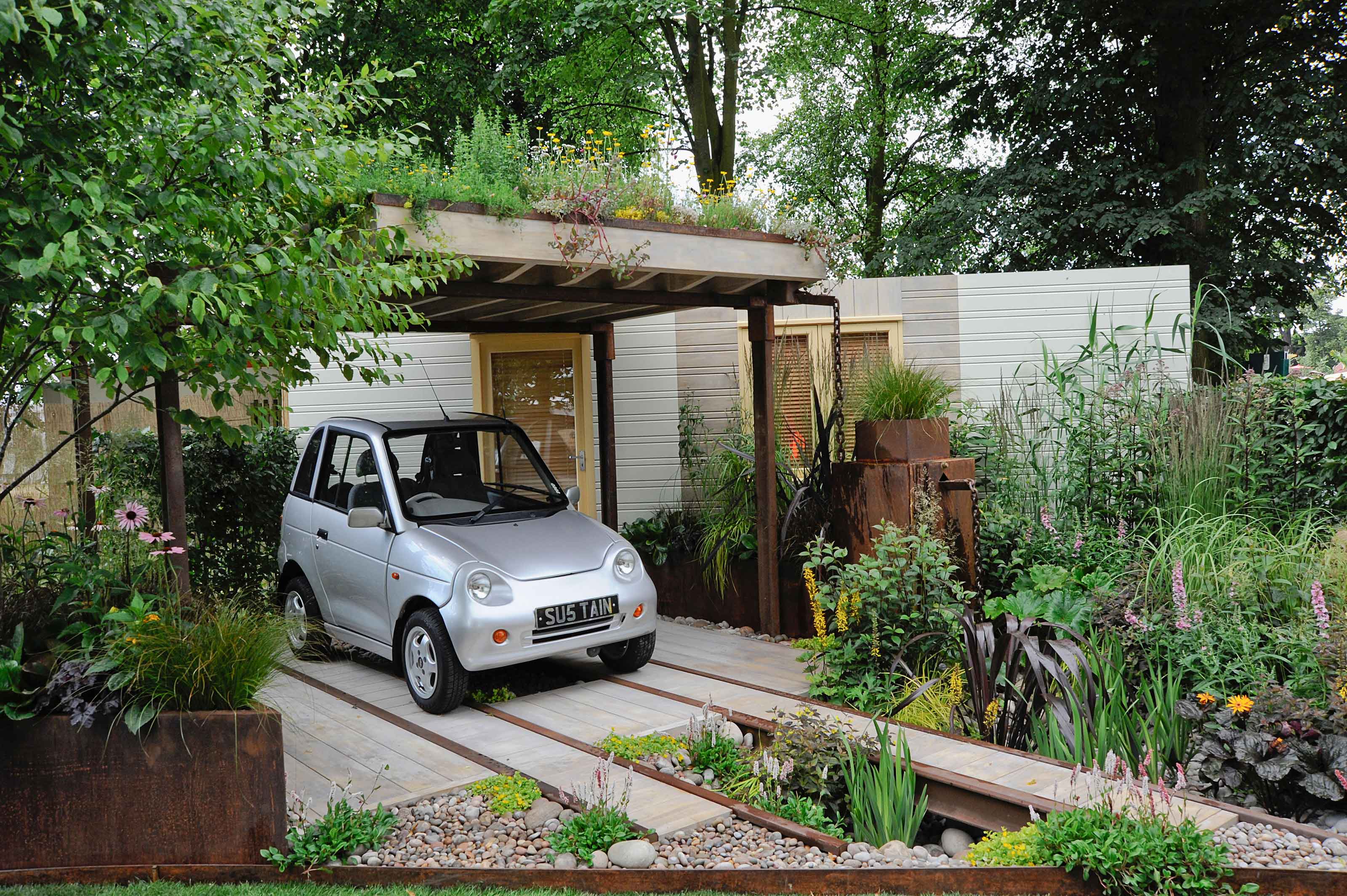
The Rain Chain garden designed by Wendy Allen at RHS Hampton Court Flower Show 2009
This garden was designed by Wendy Allen for the RHS Hampton Court Flower Show a few years ago. Unsurprisingly, it won a gold medal and 'Best Sustainable Gardens', too. There are tons of innovative factors which can be used to inspire your own backyard.
Firstly, the design features a living roof. Not only is this a clever way to make an otherwise-uneventful garage building an attractive feature, but green roofs are also great for welcoming pollinators to a plot. What's more, they're much better at soaking up rainwater.
But that isn't where this rain garden stops with its clever features. Over time, the rainwater collected from the roof trickles down via chains into stylish Corten steel planters. From here, it then funnels into a permeable rain bed below which is full of small stones and lush plants, where it can eventually filter into drains having been naturally filtered of pollutants.
The set-up is functional, too: sturdy tracks rise up above the trickling water below to support the small car. If you're looking for an update to your driveway ideas, perhaps something like this could be something to consider.
2. Collect water in raised planters
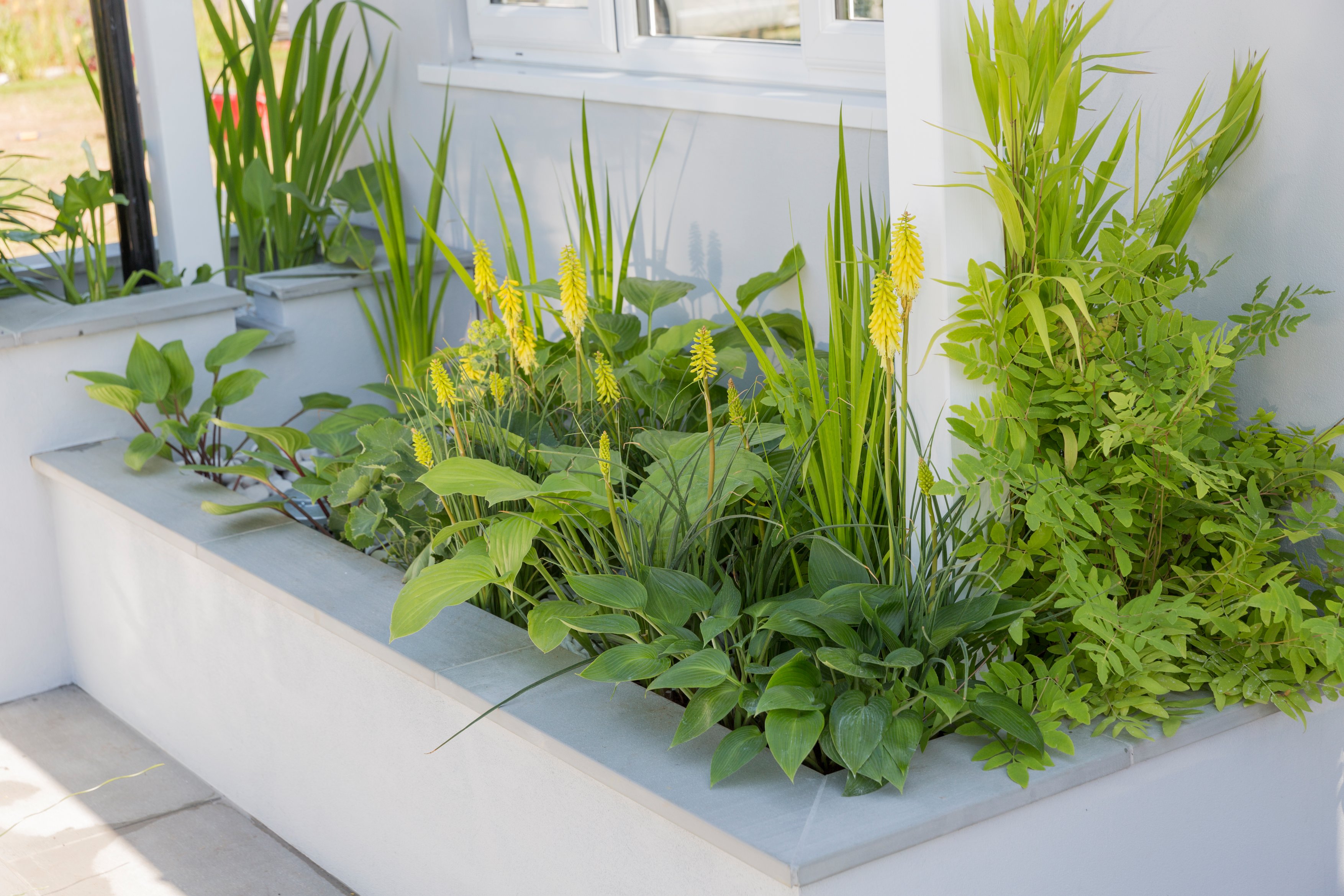
The Urban Rain Garden, designed by Rhiannon Williams for the RHS Hampton Court Flower Show 2017
You can also use a combination of raised garden bed ideas with downpipes to collect all that excess rainwater from the roof of garages, porches, or sheds. Here, the water is channeled from the roof into smart, multi-levelled planters before running into a receiving drain.
A small trill connects the planters together, funnelling the flow of water as the volume increases. Water-loving plants are positioned in the nearest planter to the pipe – where the water will be deepest during a storm – whilst perennials that are less tolerant are used in the more shallow containers in the garden (there are more positioned just out of shot).
There are lots of suitable plants to choose from, but we particularly adore this refreshing combo of yellow kniphofia and hostas.
3. Try a striking structural design
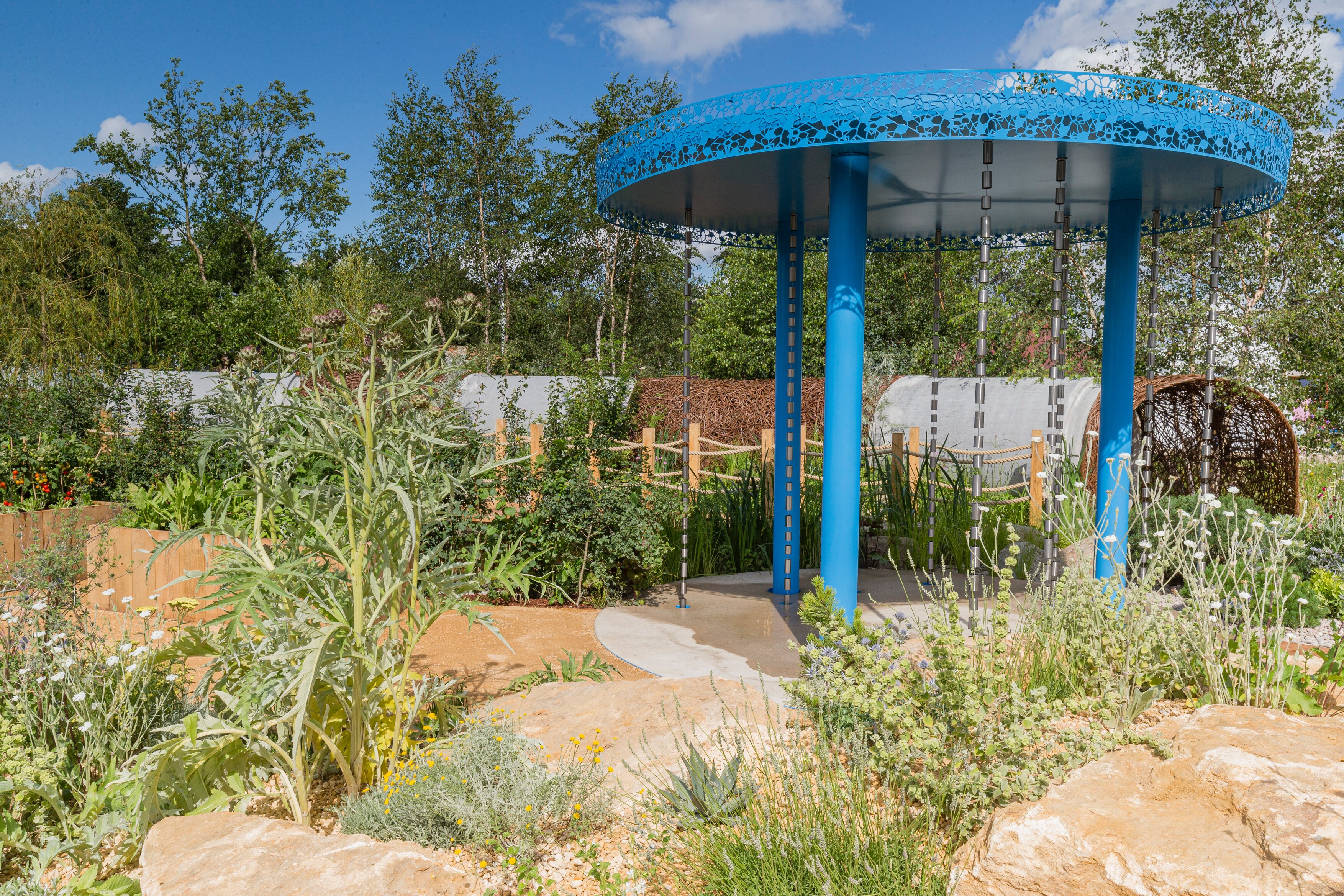
The Thames Water Flourishing Future Garden, designed by Tony Woods for the RHS Hampton Court Flower Show 2019
Considering pergola ideas for your backyard? If you're interested in rain gardens, you might like to consider a structure like this instead.
It still provides all the shelter, shade and style of a pergola, but it offers something more. Its clever design collects rainwater before channeling it downwards along thin chains, and in this specific design, the water then filters underground into a tank. From here, it is used to supply the rest of the garden's planting.
However (this is a show garden after all), you could make an adjustment to recreate the idea at home. Simply add downpipes to your sheltering structure, positioned to funnel straight into a surrounding rain garden bed.
4. Soften the edges with plenty of planting
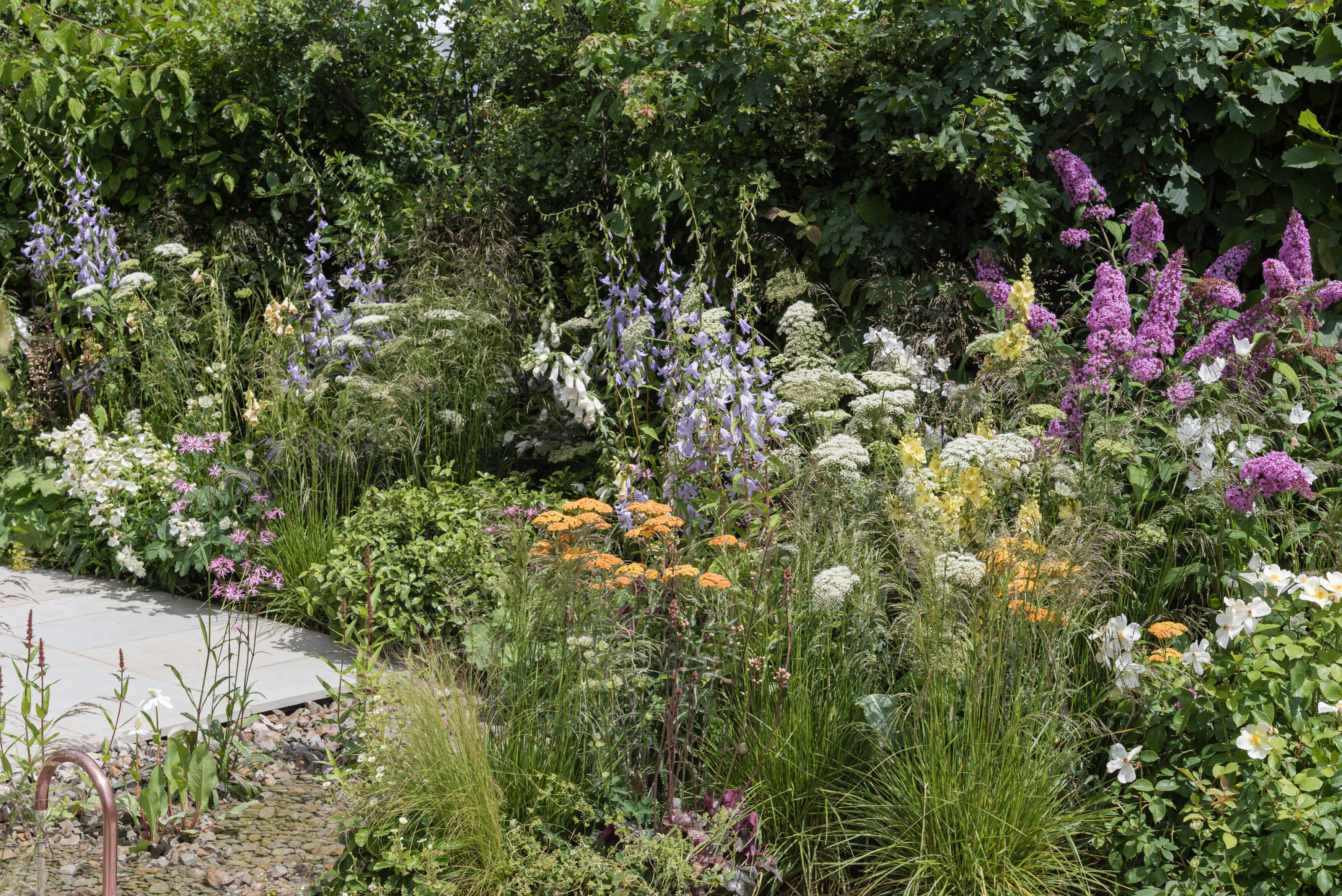
The pretty planting of The Urban Pollinator garden, designed by Caitlin Mclaughlin for the RHS Hampton Court Flower Show 2019, could be used to inspire a rain garden
When it comes to planting for rain gardens, especially for those dug into the ground, it's best to think in zones. The deepest part of the dip as well as the area closest to the inlet pipe (where the water enters) will get the wettest. So, this is best suited to native plants that can survive. As the RHS advises, they need to withstand waterlogging for up to 48 hours at a time. More drought-tolerant plants can be used around the edges, where it will dry out quicker, and around the perimeter lip (otherwise known as the berm).
There are tons of plants which are suitable for rain gardens, however, 'you should avoid using plants that do not withstand occasional flooding – for example species which are usually associated with dry Mediterranean style gardens, like lavender,' as says the team behind the Rain Garden Guide.
'Other plants to avoid include those susceptible to root rot including azalea, juniper and Chinese privet,' they continue.
Using plenty of plants will ensure that your rain garden looks beautiful. Plus, it will benefit your wildlife garden ideas too, encouraging the likes of butterflies and bees to pay your plot a visit.
5. Go for grooved paving to drain away the water
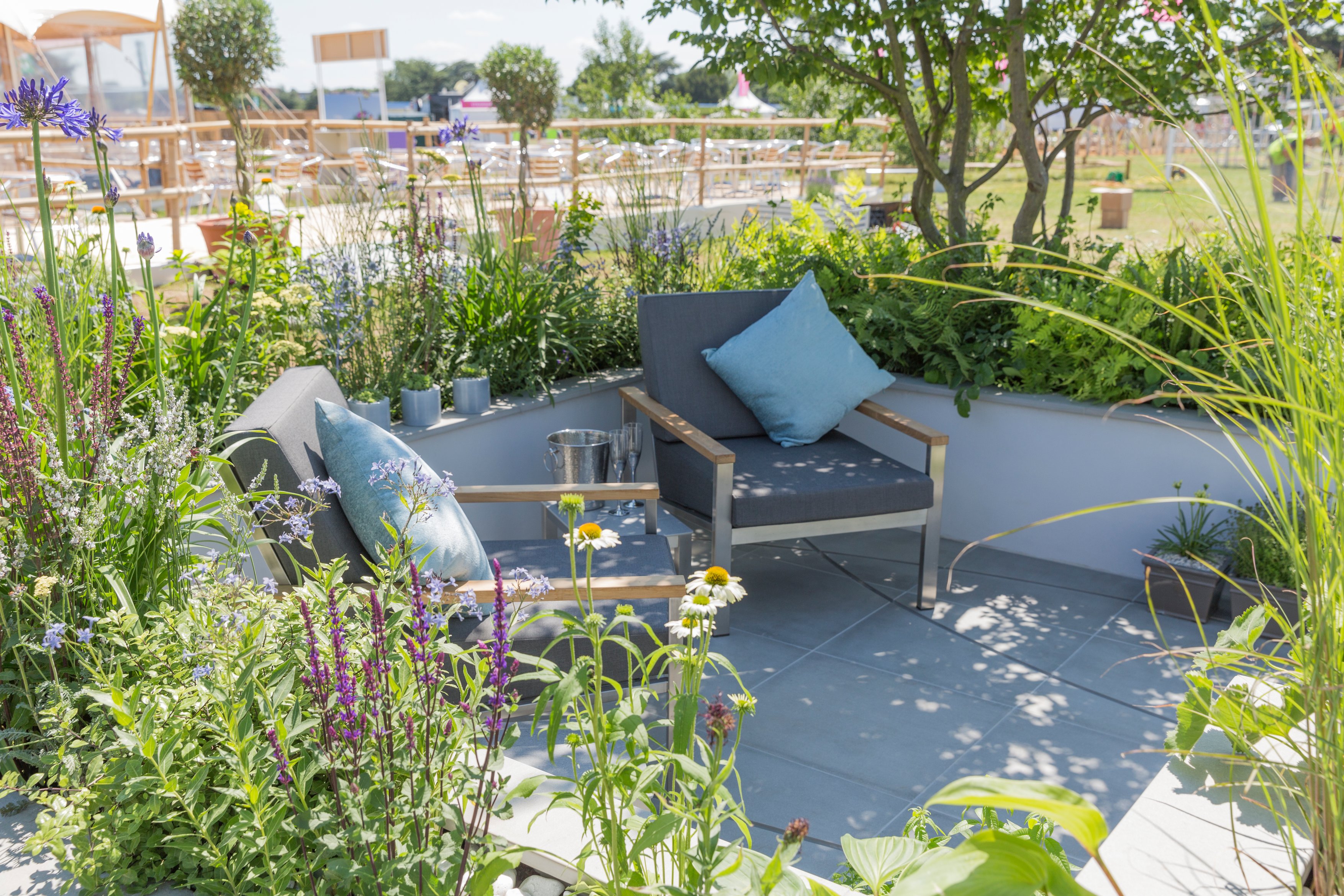
The Urban Rain Garden, designed by Rhiannon Williams for RHS Hampton Court Flower Show 2017
Have you checked out our eco paving tips feature yet? If you're interested in rain gardens, why not combine the two?
In this garden, ethically-sourced paving has been carved with grooves. These elegantly curve through the patio and down steps, towards a receiving drain. When it rains, they'll help to move water down from the surrounding raised beds into the drain via small trills, but they could easily lead to a rain garden bed, too. Stylish and practical – it's a winner in our book.
6. Channel water down steps
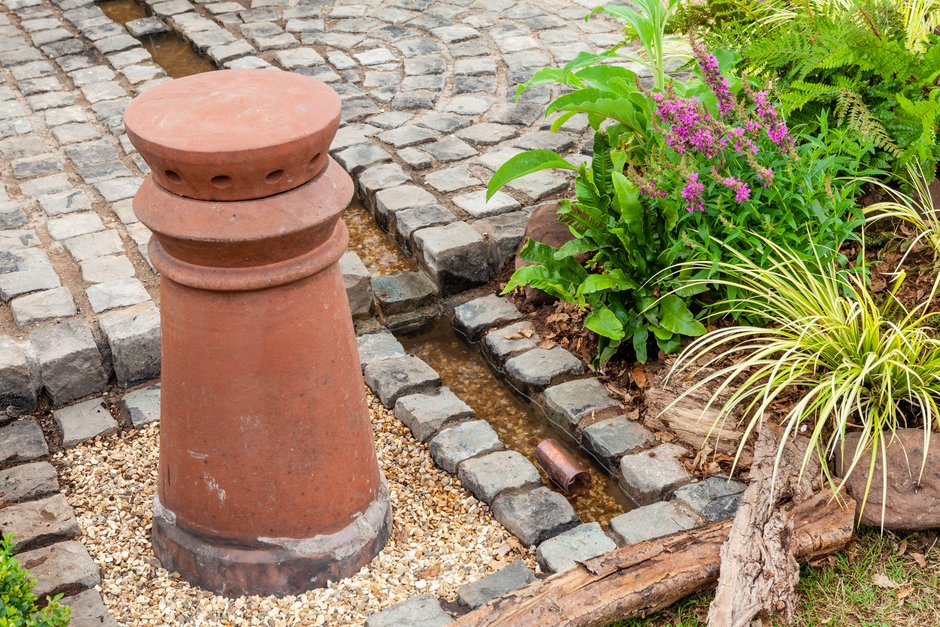
The 130 Years of Port Sunlight garden, designed by Liam English for RHS Tatton Park Flower Show 2018
Okay, technically this isn't a rain garden, but the idea would work perfectly for transporting rainwater run-off from a downpipe. And, it's a great way to pep up garden steps ideas.
Not only is it a stunning feature, but the trickling of water will also provide sensory appeal, too. 'At the point where the water enters the rain garden, cobbles or gravel will help prevent soil washing away,' advises the RHS.
7. Go for subtle features as a link

The Urban Rain Garden, designed by Rhiannon Williams for RHS Hampton Court Flower Show 2017
This is a perfect example of how excess rainwater can be channeled from raised planters into drains or rain garden beds in the ground.
As demonstrated, a small chute is all it takes to transport all that H2O downwards into a pretty white pebble base below. In this set-up, the water droplets are then guided towards a grill, which leads to a soakaway beneath the car parking area – however it could be used to lead to a rain garden bed, too.
8. Extend the theme with a water feature
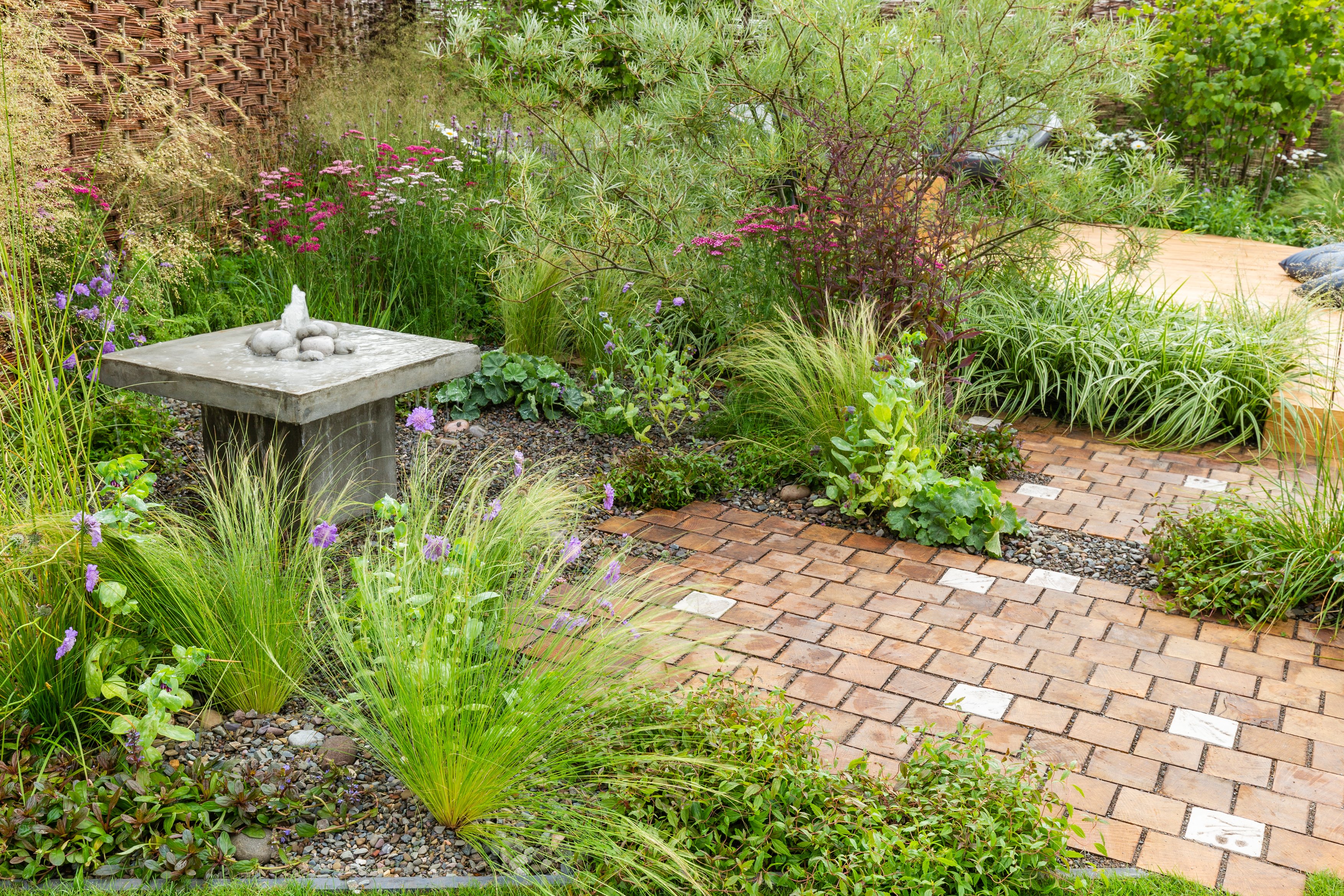
The Raised by Rivers garden, designed by Nicola Oakey for RHS Tatton Park Flower Show 2018
To continue the theme, think about using water feature ideas to complement your rain garden.
They're a lovely addition to any plot, so if you're already focusing on water, why not embrace it in this way, too? This concrete design adds an industrial tone – the perfect balance to the softer planting which surrounds it. Just make sure it sits on a sturdier area of ground.
Grasses also make a great choice for rain gardens – they can cope with temporarily wet soil as well as dry. Try Deschampsia cespitosa or the Miscanthus sinensis cultivars for their slender structures and feathery seed heads.
9. Use a series of small ponds to filter the rain
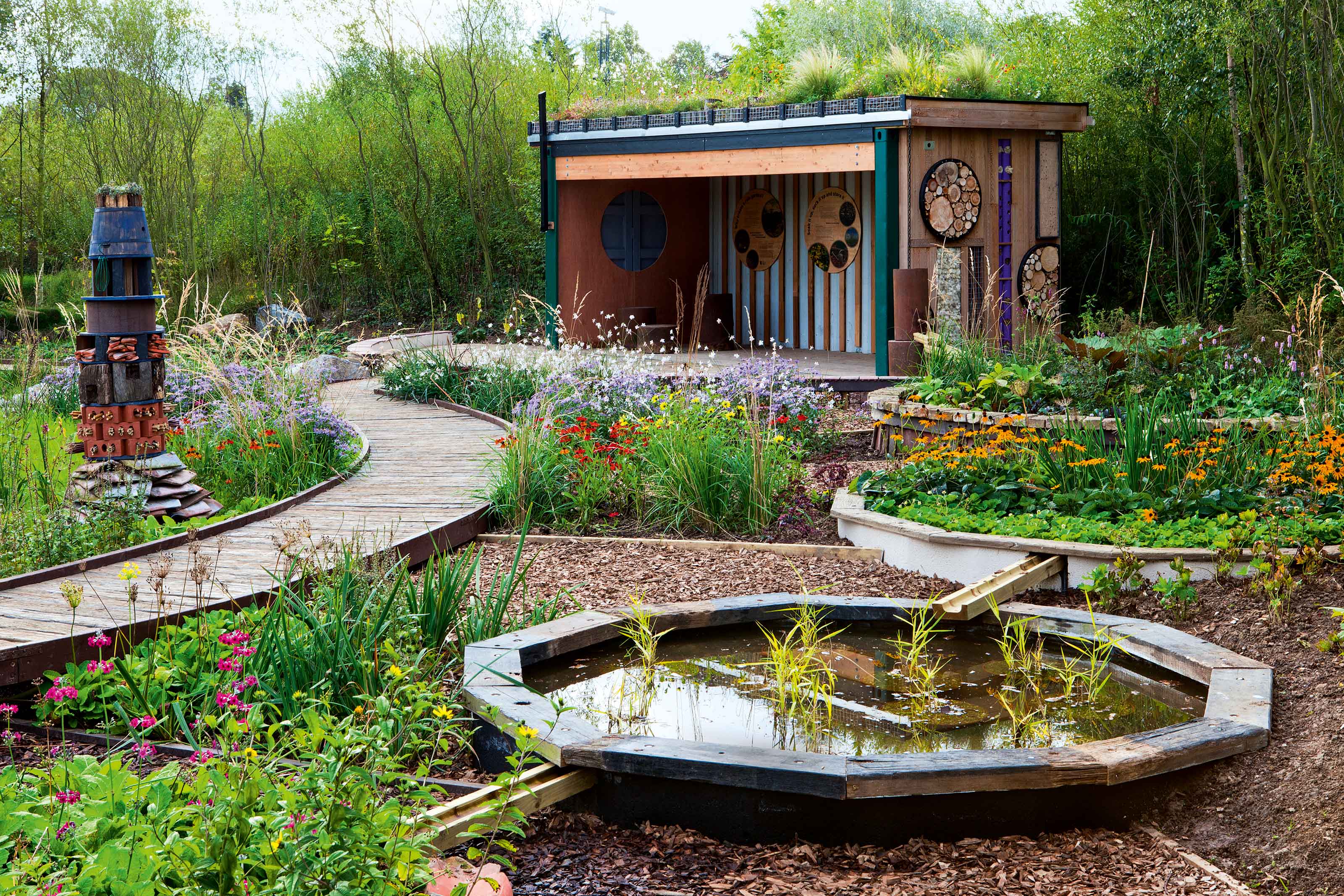
This plot channels water through a series of small rain beds and a shallow pond
You can also incorporate garden pond ideas for your rain garden – as shown in this set-up above. Its playful design is definitely suited to a more eclectic taste, but we simply adore it.
A living roof features once again to soak up rain, but the real focal point (or should we say, points) is the series of rain garden beds and eventually, a deeper pond which are connected by narrow troughs. Should this final pool overfill, the water can continue to flow away into a conventional drainage system, having being filtered by all the beautiful plants.
10. Pick the prettiest of plants
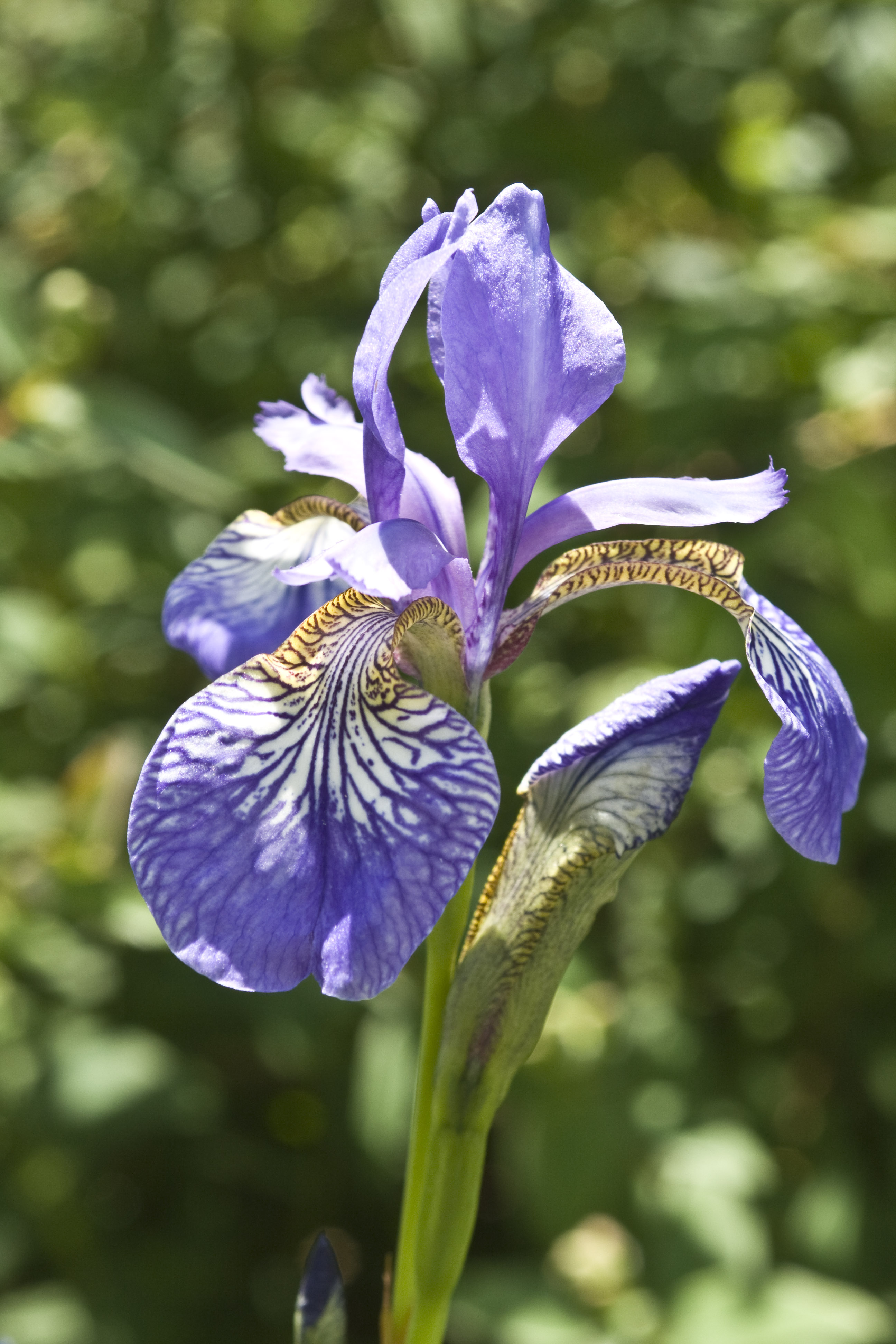
Siberian iris is a lovely pick for rain gardens
As we've mentioned, when it comes to plants for rain gardens, you're almost spoilt for choice. However, it's important to take your regional rainful into consideration, as well as how quickly your rain garden drains.
In heavy, clay soil, or in places where rainfall is frequent, you'll want to opt for plants that are more tolerant of wetter conditions, for instance. This is because the rain garden is likely to spend a lot of time wet. However, bear in mind that it's unlikely to be wet all year – as the RHS advises, don't think of it as a bog garden. And, a lot of the best pond plants are probably not quite right either.
Remember that the center of your rain garden and the area closest to the inlet of water will stay wetter for longer, so position plants accordingly. Yellow iris is a pretty choice for this situation, as is the strikingly-scarlet Lobelia cardinalis. Sedges and rushes can also do well.
Other beautiful picks that can handle both temporarily-wet and dry conditions include the Siberian iris, Crocosmia 'Lucifer', asters, aquilegias, and rudbeckias. The vivid pink beach rose can also make a wonderful addition.
Why are rain gardens important?
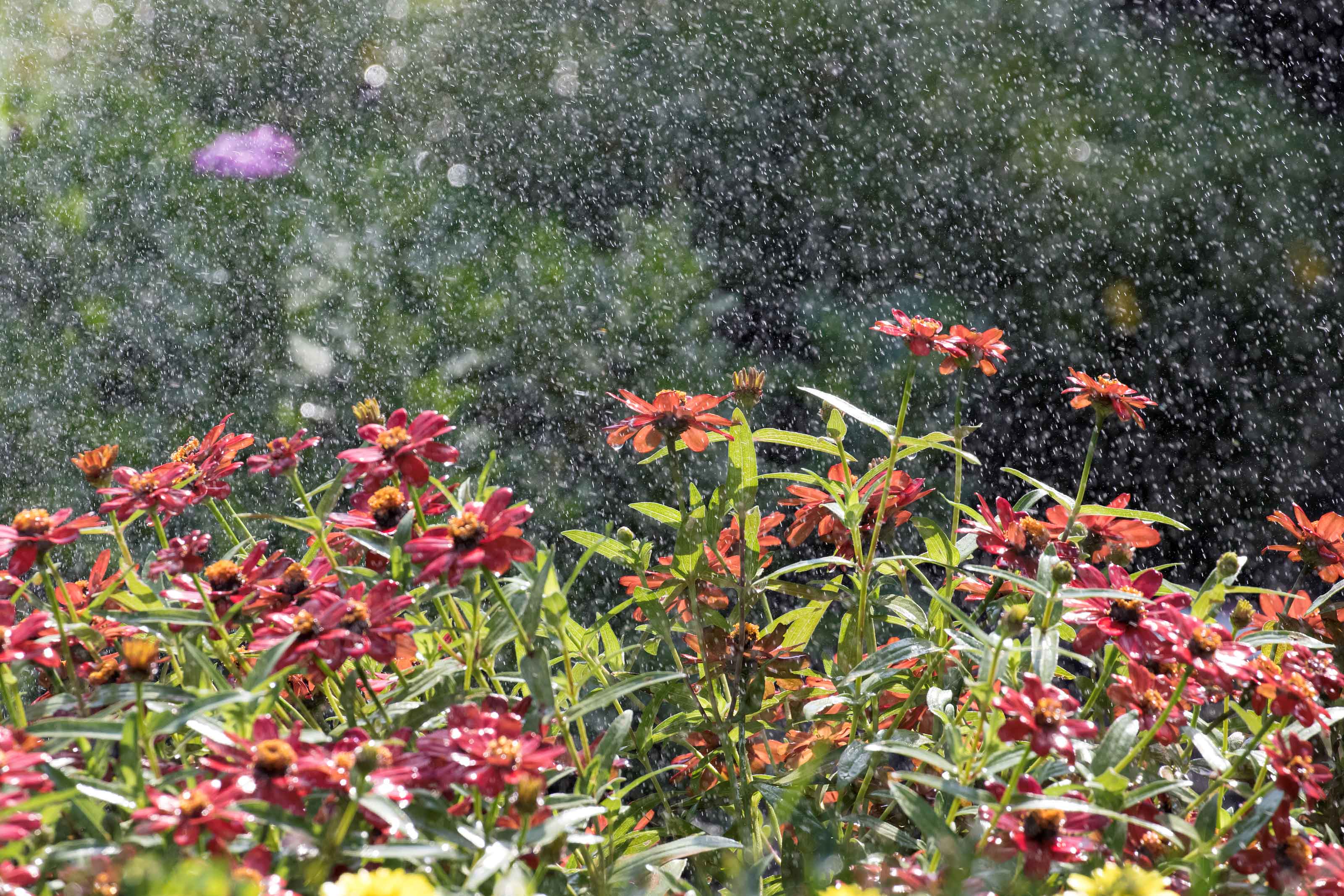
Rain gardens help to make the most of the rain
Rain gardens are becoming increasingly important as the amount of built-up areas increases and the weather becomes more temperamental due to climate change. All the hard concrete of paving, roads, and buildings is no good at absorbing water when it rains, meaning that flash floods are more likely. This can damage properties, sure, but the run-off can also pick up all kinds of oils, heavy metals, and other toxins. When this flows straight into surface water drains, these toxins are transferred into our watercourses, damaging aquatic wildlife and plants.
As rain gardens collect and help to filter this water naturally, they reduce these risks. What's more, they're great for wildlife, and, by increasing the amount of water in the soil, can help green spaces to thrive during droughts.
Rain gardens are just one step you can do to create an eco-friendly garden – our guide has lots more ideas.
How do you make a rain garden?
These simple steps will help you to build a rain garden in the ground of your plot:
- Start by planning the area and marking out the shape. It's best to select an area which is at a low-point of your garden: this will help surface water naturally flow towards it. You may wish to position it close to an existing drain where possible too, in case of overflow.
- Dig out a shallow depression in the ground, removing any vegetation, including weeds, as you go. The base of the excavation for a typical rain garden will be between 150mm and 450mm below original ground level, explains the team from the Rain Garden Guide. Try to get the base as level as possible.
- Then, backfill the dip, mixing in plenty of organic matter (if you need to know how to compost, our guide has plenty of tips). If the soil is particularly heavy, working in sand, gravel, or stones as well as the organic matter will also help to make it more absorbent.
- Whilst doing this, use some of the dug-out soil to create a compact berm – this is otherwise known as the lip of the rain garden and should be around six inches high from ground level. Continue to level the bed itself back up to ground level to create a freeboard – this is the space between the surface of the bed and the surrounding berm – which will temporarily flood during rain. The berm can then be tapered off to connect seamlessly to its surroundings.
- You will also need to create an inlet channel, to allow water from downpipes or other drainage systems into the bed. Line it with bricks, pebbles or gravel to ensure the water doesn't wash away the soil. Likewise, you may also wish to create a second channel, to move any overflow of water away, towards an existing drain.
- Once these steps are complete, it's ready to fill with plants.

The garden was always a big part of Holly's life growing up, as was the surrounding New Forest where she lived. Her appreciation for the great outdoors has only grown since then. She's been an allotment keeper, a professional gardener, and a botanical illustrator – plants are her passion.
